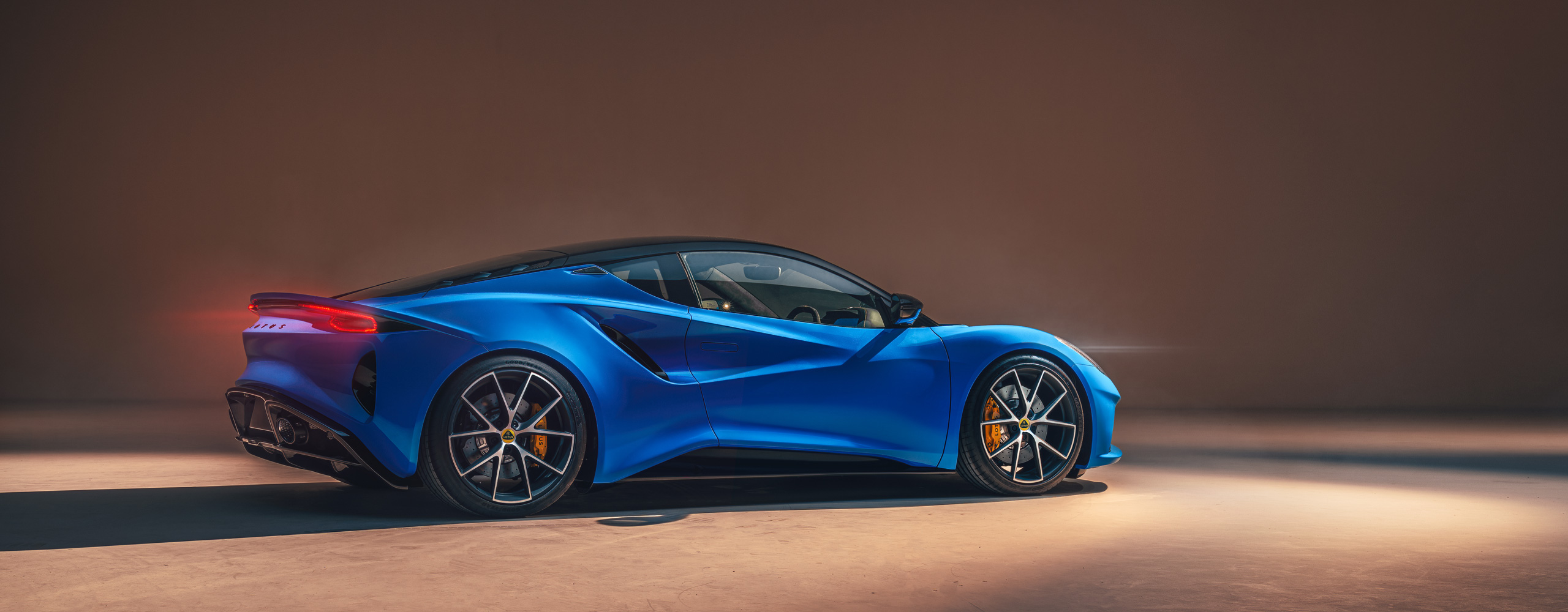
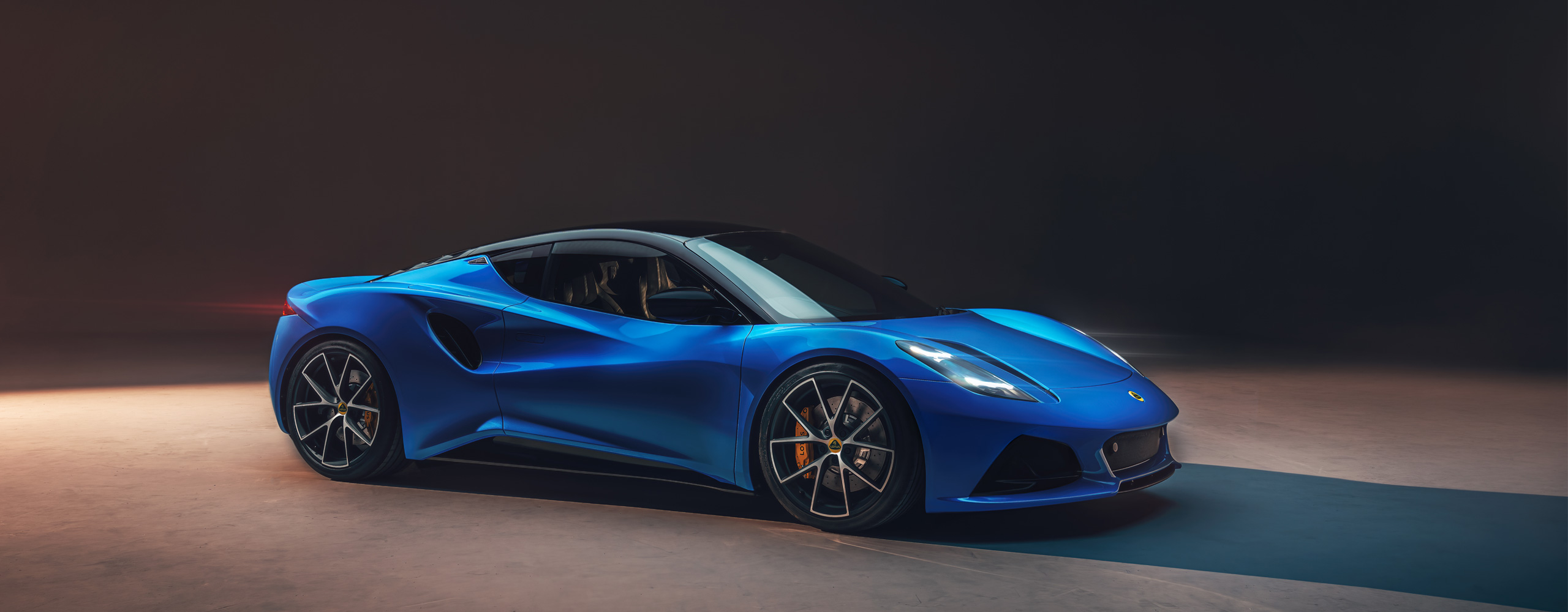
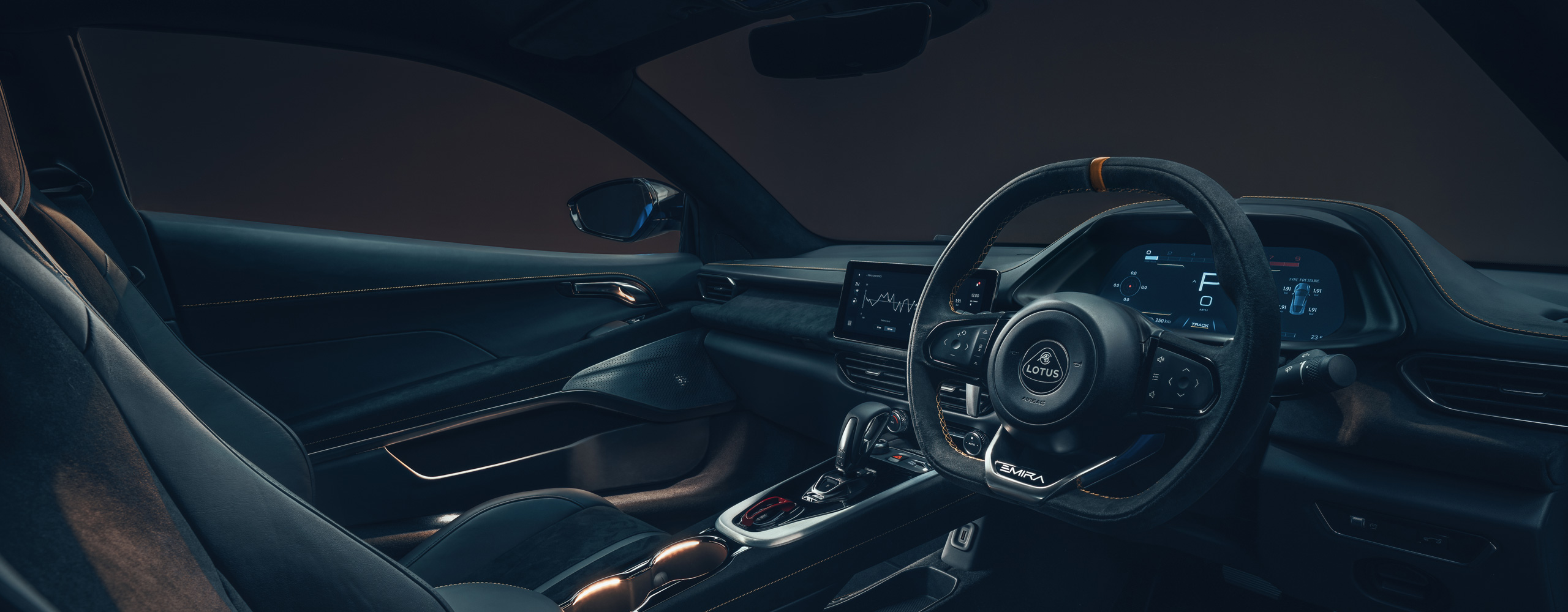
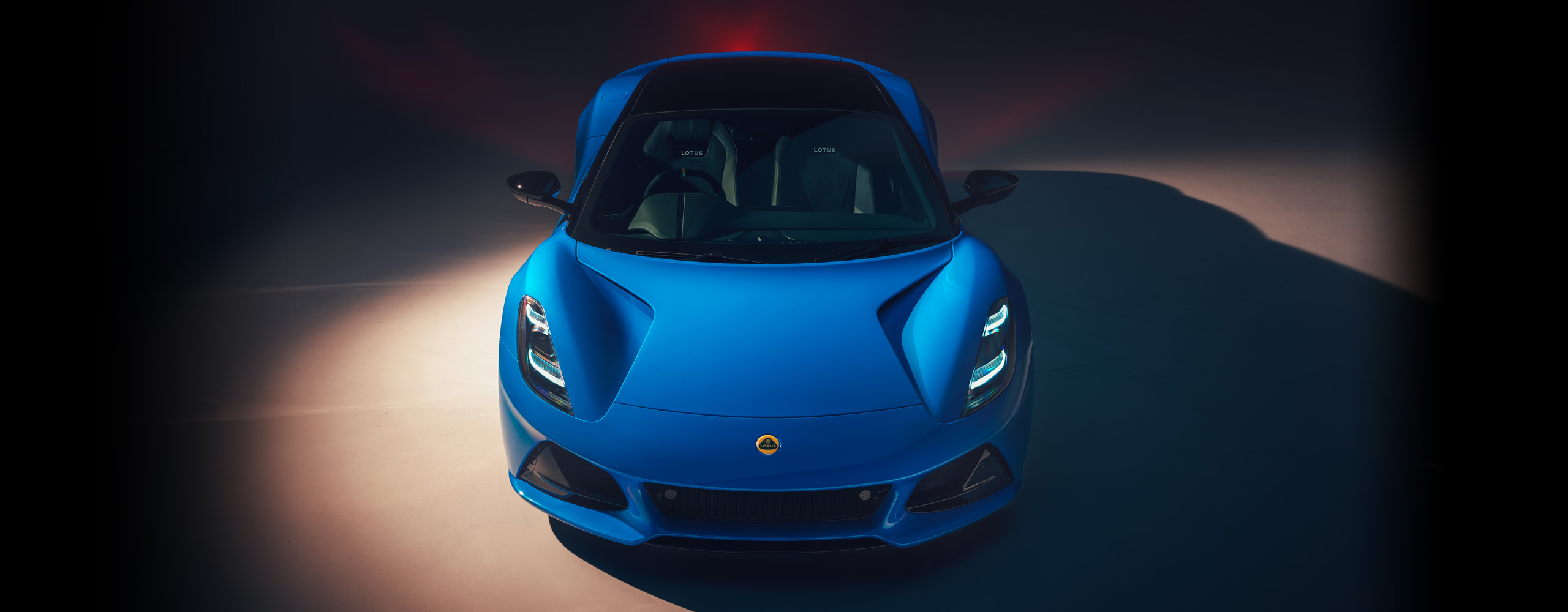
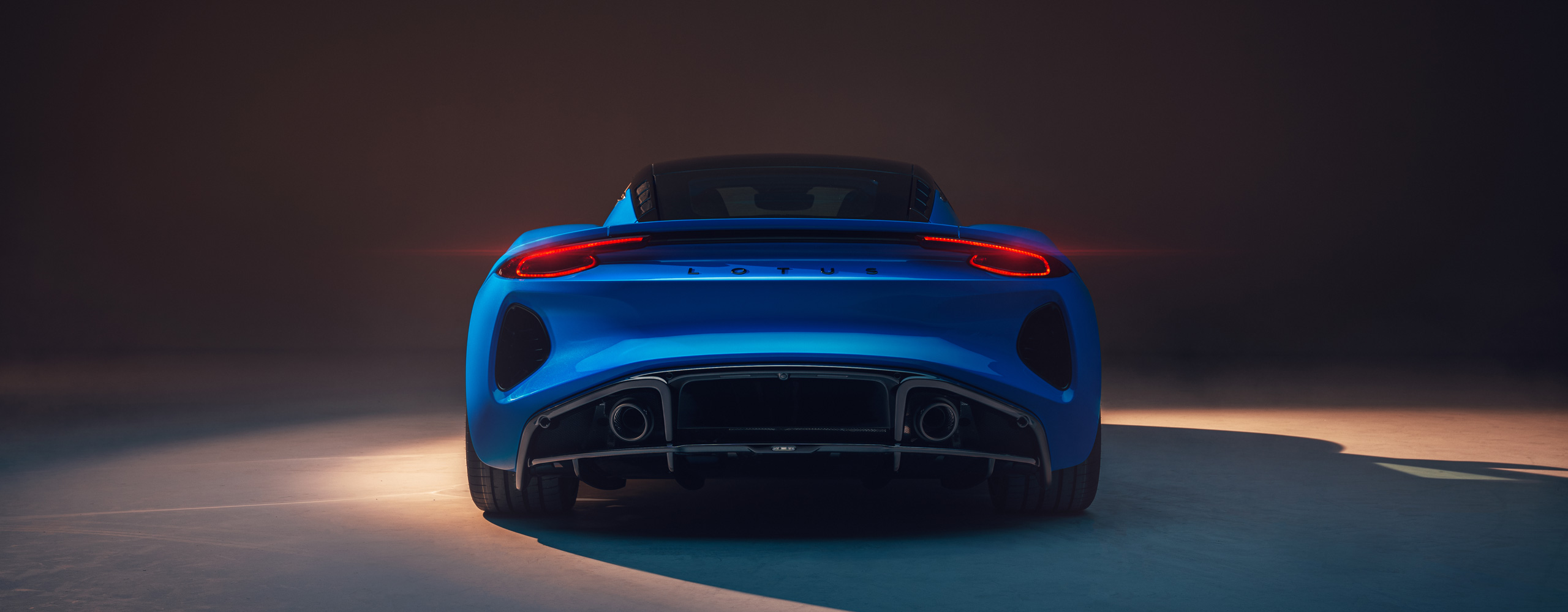
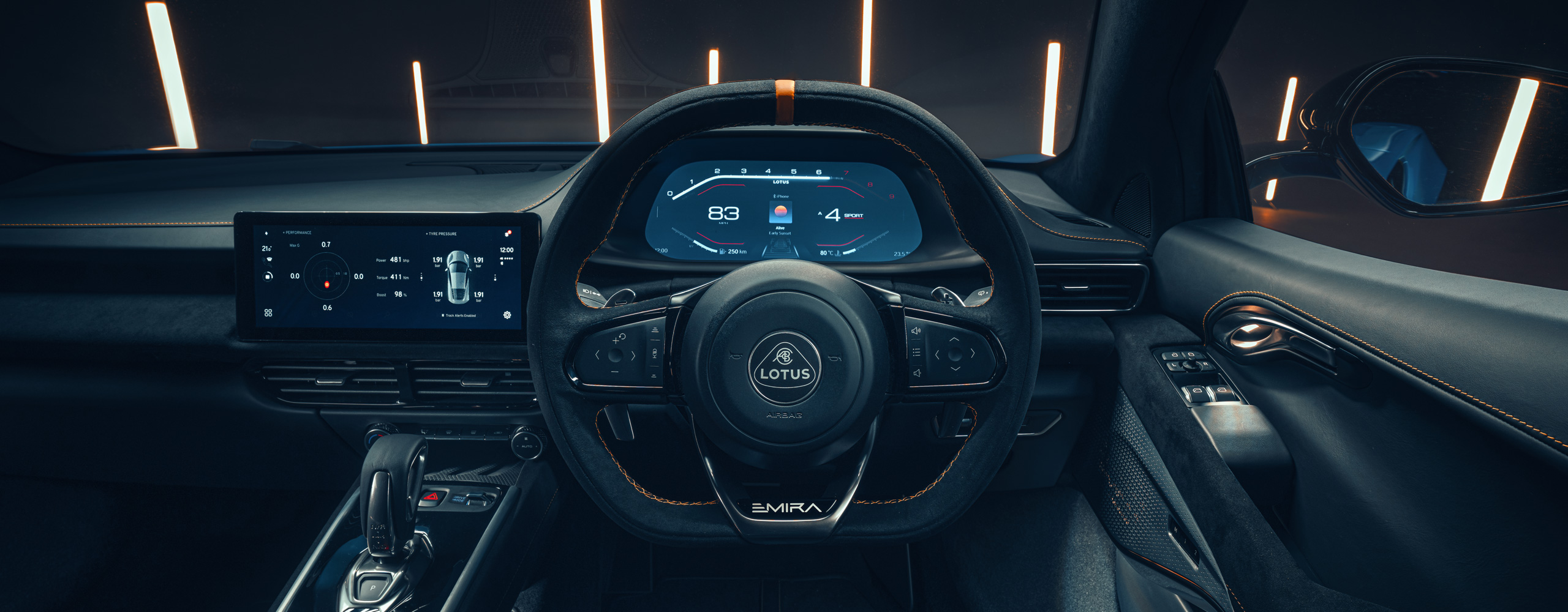
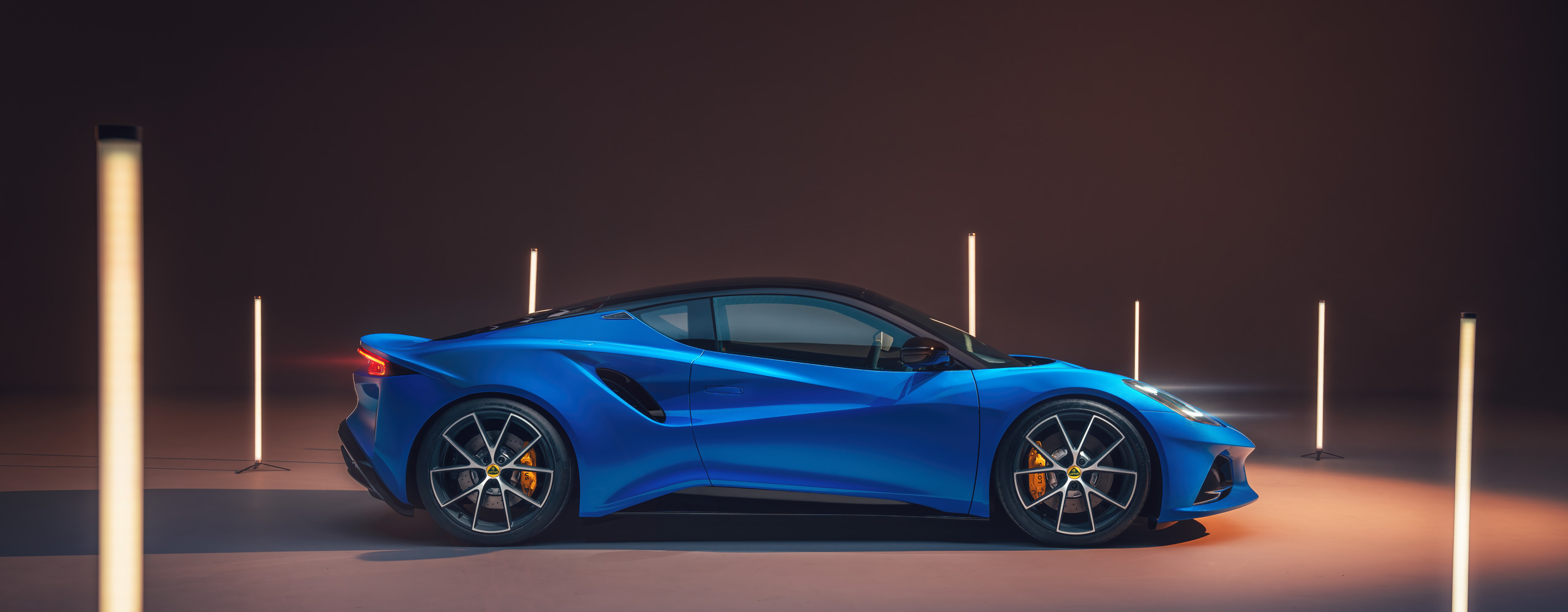
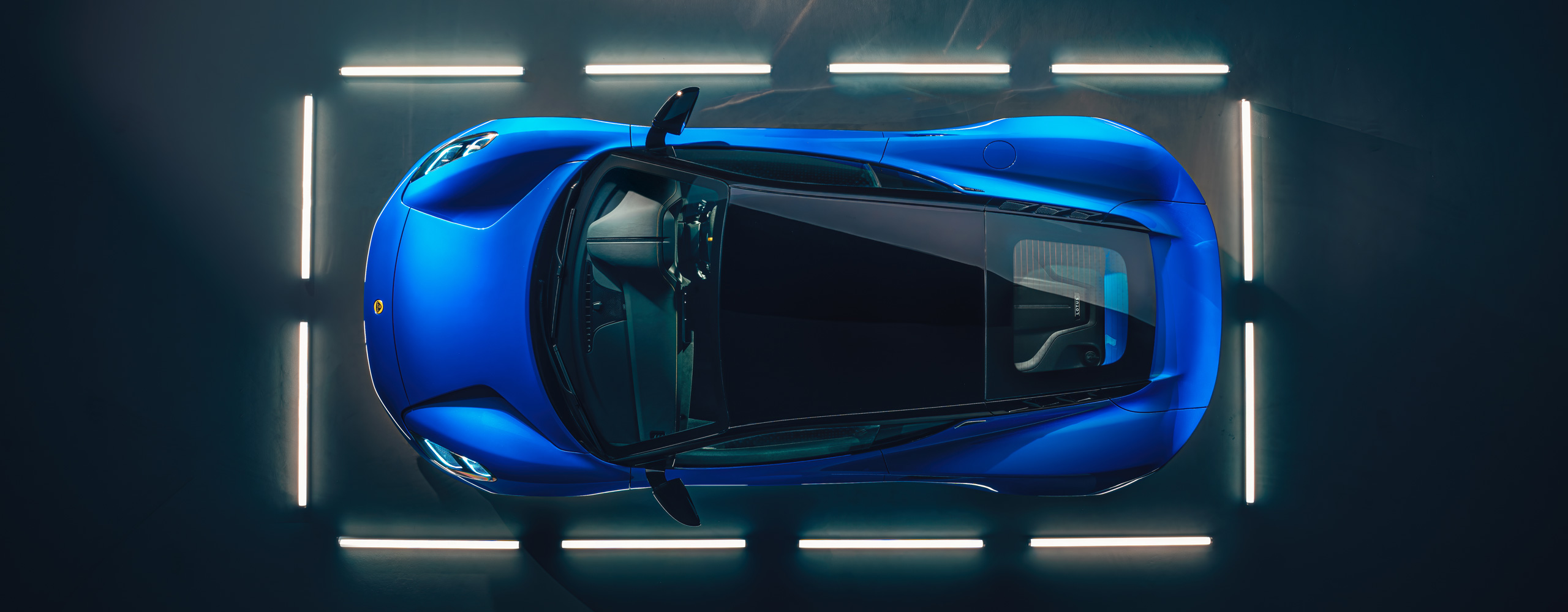

- All-new mid-engined sports car perfectly embodies ongoing transformation of iconic British sports car manufacturer
- Striking design, delivering exotic supercar appeal in sports car segment
- Inspiration from Lotus Evija hypercar clear in fluid surfaces and crisp feature lines
- Developed on Lotus’ recently announced Sports Car Architecture
- Two petrol engines available, including new-to-Lotus 2.0-litre turbocharged engine from technical partner AMG
- Much-loved and characterful 3.5-litre supercharged V6 from Exige and Evora to feature as ‘First Edition’ range-topper
- Manual, automatic and Dual Clutch Transmission to maximise global appeal
- Power output from 360 to 400 hp at launch
- 0-62mph (0-100km/h) in less than 4.5 seconds
- Top speed of up to 180mph (290km/h)
- Target weight of 1,405kg in its lightest form
- Prices will start from £59,995 with V6 First Edition costing £75,995
Lotus Emira: the most accomplished Lotus ever made
The Emira is an all-new mid-engined premium sports car that perfectly embodies the ongoing transformation of the Lotus business and brand. It features all the hallmarks that the automotive world has come to expect from a Lotus – striking design, thrilling dynamic performance delivering best-in-class ride and handling, outstanding aerodynamics and an unrivalled experience ‘For The Drivers’.
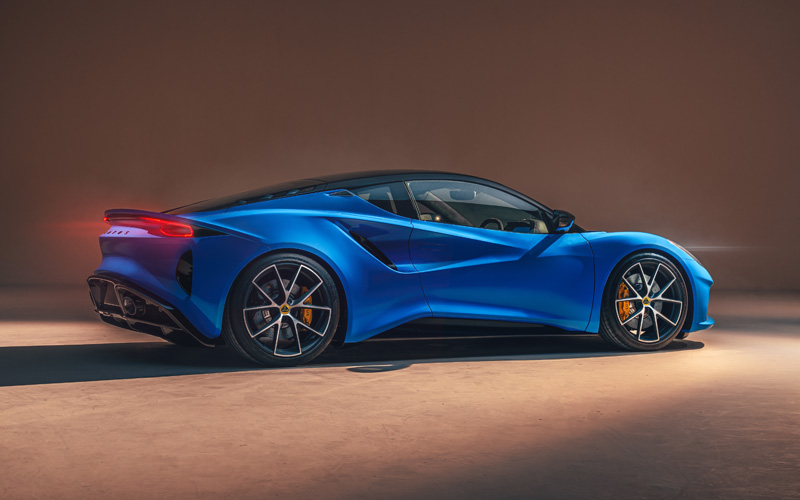
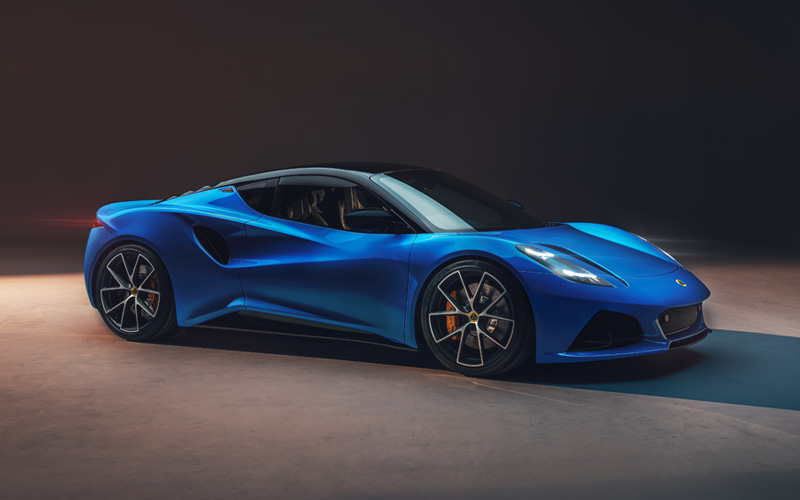
Building on the legacy of the Elise, Exige and Evora, the Emira represents a quantum leap forward for Lotus. Those instantly recognisable brand signatures and core values have been combined with a paradigm shift in levels of practicality, comfort, functionality and technology.
Matt Windle, Managing Director, Lotus Cars commented: “The Emira is a game-changer for Lotus. It stands as a beacon of everything we have achieved to date in the transformation of the business, the embodiment of our progress. It is a highly significant milestone on our path to becoming a truly global performance car brand.”
The Emira has been developed on a new lightweight bonded aluminium chassis, technology pioneered by Lotus and which remains an intrinsic part of the company’s sports car DNA. That innovative vehicle architecture is wrapped with a bold and sculpted design using cues clearly developed from the Evija. Key dimensions of the Emira are length 4,412mm; width 1,895mm; height 1,225mm; and wheelbase 2,575mm.
First customer cars will start to be delivered around the world from summer 2022. Powering the Emira will be a choice of two petrol engines, both globally respected for their performance characteristics. At launch, the first cars will be available as limited-production ‘First Edition’ models powered by the much-loved and Lotus-honed 3.5-litre V6 which cut its Hethel teeth powering the Exige and Evora.
From later in 2022 the Emira will be available with a new-to-Lotus turbocharged 2.0-litre four-cylinder engine from AMG, the performance division of Mercedes-Benz.
Working with Lotus for the first time, AMG has come on board as technical partner on the Emira programme, with some fundamental changes made to the in-line four-cylinder set-up for its Lotus debut. Transverse-mounted and delivering rear-wheel drive, the unit has been modified with a new air intake system and new exhaust to suit the character of the Emira. The second engine is more familiar, the 3.5-litre supercharged Toyota V6 that is so loved by drivers of the Exige and Evora. Cars will be available with a manual, automatic and Dual Clutch Transmission (DCT).
Across the Emira range, power output will between 360 and 400bhp at launch, with 0-62mph (0-100km/h) acceleration in less than 4.5 seconds and top speeds of up to 180mph (290km/h). Maximum torque will be 430Nm and CO2 emissions will start below 180g/km. The car has a target weight of 1,405kg in its lightest form, and prices will start at less than £60,000 (less than €72,000).
Manufacturing will take place at Lotus’ famous home in Hethel, Norfolk, following more than £100million of new investment in the company’s UK facilities. The highly skilled operations teams will be supported by new processes and technologies to enhance production efficiency, volume capability and overall quality.
Matt Windle added: “The Lotus Emira is the most accomplished Lotus road car ever to roll through the Hethel factory gates. Beautifully proportioned with a stunning design inspired by the Evija all-electric hypercar, it’s the perfect package. The Emira is a junior supercar with all the thrills and head-turning characteristics found in the greatest Lotus cars, but at the same time is an everyday sports car that’s high on comfort and functionality, packed with the latest technology demanded by the discerning driver.”
Lotus has confirmed the price and full specification of the all-new Emira V6 First Edition. The car, fully loaded with a host of desirable technology, infotainment and comfort features plus unique badging, costs £75,995.
The price in major European markets has also been released, including in Germany where the car is €95,995. Prices in other international markets, including USA and China, will be released in the coming weeks. Production of the Emira V6 First Edition will start in the spring, with the four-cylinder First Edition arriving in the autumn.
Matt Windle, Managing Director, Lotus Cars, commented: “The Emira is the most accomplished Lotus we've ever made, and to celebrate and reward our keenest early customers, we want to make the first cars extra special to own. The features have been carefully selected by our design team to make for a truly special and distinct First Edition.”
The Emira is an all-new mid-engine premium sports car that perfectly embodies the ongoing transformation of the Lotus business and brand. It features all the hallmarks that the automotive world has come to expect from a Lotus – striking design, thrilling dynamic performance delivering best-in-class ride and handling, outstanding aerodynamics and an unrivalled experience ‘For The Drivers’.
Building on the legacy of the Elise, Exige and Evora, the Emira represents a quantum leap forward for Lotus. Those instantly recognisable brand signatures and core values have been combined with a paradigm shift in levels of practicality, comfort, functionality and technology. The Emira has been developed on a new lightweight bonded aluminium chassis – technology pioneered by Lotus and which remains an intrinsic part of the company’s sports car DNA.
Powering the V6 First Edition is the much-loved and Lotus-honed 3.5-litre supercharged V6 engine, mid-mounted behind the two seats. Developing 400hp, it’s mated to a six-speed manual gearbox with a visible gearchange mechanism and hydraulic power-assisted steering.
The car rides on 20-inch ultra-lightweight V-spoke forged alloy wheels. They’re diamond cut to create a premium two-tone finish, though silver or gloss black versions are available as a no-cost option. Two-piece brake discs with branded calipers are part of the First Edition spec, plus a Tyre Pressure Monitoring System (TPMS).
The First Edition comes in one of six vibrant paint colours: Seneca Blue – which was seen at the car’s launch in July – plus Magma Red, Hethel Yellow, Dark Verdant, Shadow Grey and Nimbus Grey. More colours will be available during 2022.
Exterior details include LED lights all round, a titanium exhaust finisher, heated power-fold door mirrors and rear parking sensors. The Lower Black Pack is fitted as standard, which means the front bumper air blades, front splitter, side sills and rear diffuser are all in finished in gloss black.
There are seven interior colour choices, all available at no extra cost. They are red, black, grey and tan Nappa leather, as well as black Alcantara with either red, yellow or grey stitching. Satin chrome trim finishers, white interior mood lighting and Lotus-branded sill kick plates complete the premium look.
The heated seats feature 12-way adjustability and two memory presets linked to the door mirrors (driver’s seat only). Climate control, cruise control, keyless start and selectable drive modes are all included.
Apple CarPlay, Android Auto and satellite navigation (in selected markets) are integrated into the Emira V6 First Edition, supported by Bluetooth and USB/12v sockets. The 10-channel/560W premium audio system has been developed in partnership with respected British brand KEF and includes DAB digital radio. All functions are accessed through a 10.25-inch centrally mounted touch-screen, with driver feedback through a 12.3-inch TFT instrument cluster ahead of the multi-function steering wheel.
Three more option packs are fitted as standard to the car, making four in total. The Drivers Pack gives customer the choice of Tour or Sport suspension with Goodyear Eagle F1 Supersport tyres, or Sport suspension with Michelin Pilot Sport Cup 2 tyres.
The Design Pack adds privacy glass, sports pedals, a black Alcantara headliner, and the choice of black, red, yellow or silver painted brake callipers. Lotus-branded footwell mats are also included. The Convenience Pack adds front parking sensors, rear reversing camera, rain-sensing wipers with aero blades, auto-dimming mirrors and a rear luggage storage net.
Options available at extra cost include a six-speed automatic gearbox with paddle shift (£1,800 / €2,600 in Germany); and the Black Pack, which colours the roof, cantrails, mirror backs, rear Lotus badge and exhaust finisher (£1,200 / €1,370 in Germany).
Production of the Lotus Emira V6 First Edition will start in the spring, with the four-cylinder First Edition arriving later in the autumn. An entry level Emira – priced from £59,995 – will be available during 2023.
LOTUS EMIRA V6 FIRST EDITION TECH SPEC
|
Engine configuration |
3,456cc / V6 |
|
Engine model |
Toyota 2GR-FE |
|
Supercharger |
Edelbrock 1740 |
|
Power |
400hp / 298kW |
|
Torque |
420Nm (manual) / 430Nm (auto) |
|
Max engine speed |
6,800rpm |
|
Gearbox |
Six-speed manual / six-speed auto |
|
CO2 emissions (WLTP Combined) |
258g/km |
|
Fuel economy (WLTP Combined) |
25.0mpg (11.3 l/100km) |
|
0-60mph |
4.2 seconds |
|
0-100km/h |
4.3 seconds (manual) |
|
Top speed |
180mph / 290km/h |
|
Drag coefficient (Cd) |
0.349 |
Lotus retailers around the world are now taking deposits for the Emira. A digital visualiser showcasing the car’s striking design is live at www.lotuscars.com, allowing customers to fully spec their car.
Lotus Emira in detail

The Emira is the first all-new Lotus sports car to be delivered under Vision80, the strategic plan which is guiding the transformation of Lotus as it moves towards its 80th anniversary in 2028. It is a truly global model, engineered to sell in all major markets around the world. Acting as a catalyst to further enhance brand awareness globally, it’s spearheading the repositioning and expansion of the Lotus retail network ahead of the arrival of a family of new vehicles.
Pronounced ‘Eh-meer-ah’, the word features in numerous ancient languages and often translates as ‘commander’ or ‘leader’. It’s highly appropriate as this is the exciting new sports car leading Lotus’ last hurrah with internal combustion engines, before fully embracing electrification and a new era for the brand later in the decade.
Exterior design: delivering exotic supercar appeal in the sports car segment
The Emira is the first Lotus sports car to carry the new design language first showcased on the award-winning Evija hypercar. It’s a contemporary look with sculpted surfaces and technical detailing, delivering exotic supercar appeal in the sports car segment. A new and more premium approach for Lotus in terms of forms and materials, it is also a leap forward in fit and finish.
Led by Russell Carr, Design Director, Lotus, the creative team has succeeded in designing something beautiful, timeless, memorable, modern and that looks like a Lotus. Its optimised proportions and athletic shrink-wrapped body visually describe Lotus’ legendary agile driving characteristics.
Russell commented: “The Emira captures the visual drama of an exotic supercar, with great proportions, wide footprint and a cabin that sits low down between muscular haunches. Add in that it’s practical enough to be useable every day, of the highest quality and accessibly priced, and it’s undoubtedly a compelling and seductive alternative to the existing sports car competition. The Emira is re-introducing our brand to a new global audience while still offering all the thrills to engage the most ardent driving enthusiast.”
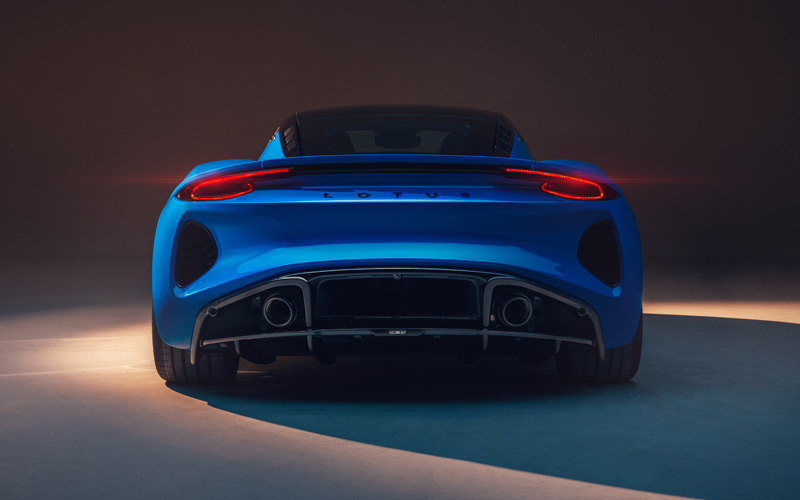
The influence of the Lotus Evija is plain to see through the fluid surfaces and crisp feature lines. The lineage is even more obvious on the prominent leading edge of the bonnet, shrink-wrapped cabin that’s tapered to the rear, sculpted doors and vents cut into the muscular rear haunches. The unique-in-class exit vents, integrated into the bonnet to guide airflow over the car and optimise aerodynamics, are also derived from the Evija.
Vertical all-LED headlamps are standard across the range, with a wing-inspired twin blade design also familiar from the Lotus hypercar. The bonnet houses the current iteration of the iconic Lotus roundel, its first appearance on a new Lotus sports car and slightly larger than on previous models.
Looking at the Emira in profile, the sculpted section cut into the door leads air flow towards the intake ahead of the rear wheel. This serves a dual purpose, providing air for the engine but also to cool it. The Emira name badge is visible from the side, integrated into the C-pillar. All wheels are 20-inches in diameter; as standard they will be fitted with a Goodyear Eagle F1 Supersport tyre, while a Michelin Pilot Sport Cup 2 is a cost option available in conjunction with the Lotus Drivers Pack. Both tyres have been specially developed for the Emira by their manufacturer.
At the rear, the Lotus wordmark dominates the integrated bumper, above a body coloured panel that’s clearly inspired by the rear of the Evija. At each end is an exit vent for air from the wheel arch. Each corner has a flat C-shaped LED light cluster linked by a slimline high-level brake light. Below is a black section housing twin exhaust pipes either side of the number plate and with an air diffuser underneath to aid downforce.
Efficient aerodynamics has been at the heart of the Lotus brand since the company was founded in 1948. It is a philosophy inextricably linked to delivering outstanding performance whether a car is on the road or race track. Simplicity is at the core of the Emira – there are no active aerodynamics as clever engineering means they’re not needed. It is the only model in its class to create passive downforce that’s precisely balanced between the front and rear axles at all speeds, perfectly tuned to the weight distribution and suspension geometry of the car. It means as downforce increases with speed, generating exceptional grip through corners, the handling characteristics remain constant, precise and predictable.
Richard Hill, Chief Aerodynamicist, Lotus Cars, commented: “At Lotus, development of any new sports car is never focused solely on either aerodynamics or vehicle dynamics. It’s about creating that unique harmony of natural forces that is ‘Lotus dynamics’ – a sprinkling of magic dust that creates a thrilling driving experience that’s unrivalled in the automotive world. The Emira has that magic and more.”
Chassis and powertrain: advanced new platform mated to high-performance engines
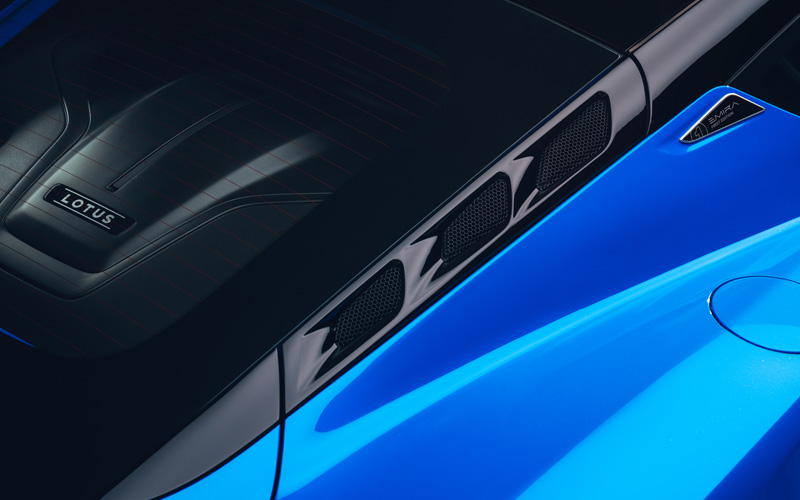
The Emira is built on the recently announced new Lotus Sports Car Architecture. It uses the same pioneering Lotus bonded extruded aluminium chassis technology which debuted on the Elise. However, for the Emira, every dimension is different to any previous Lotus chassis and it is fabricated in an all-new facility – Lotus Advanced Structures – in Norwich, just a few miles from Hethel.
The car has two defined chassis and suspension settings. Tour is tuned for everyday road use, delivering the optimum blend of Lotus dynamic performance and handling with a more comfortable ride. Sports is available with the optional Lotus Drivers Pack and provides a slightly stiffer suspension set-up for enhanced dynamic capability and feel. Hydraulic steering provides excellent feedback for the driver.
Two petrol engines are available, a Lotus-engineered 2.0-litre four-cylinder unit from technical partner AMG, and the much-loved and characterful 3.5-litre V6 from the Exige and Evora. Each is calibrated by Lotus to provide a unique and distinctive character for maximum driver engagement.
Gavan Kershaw, Director of Vehicle Attributes, Lotus, commented: “The 2.0-litre is the world’s most powerful production in-line four-cylinder unit mated to AMG’s acclaimed DCT with paddleshifts and driving modes. It’s high-performance, hugely efficient thanks to cutting-edge technology, and delivers low emissions and linear performance. On top of all that, it’s been tuned in-house by the hugely experienced Hethel engineers to deliver that distinctive Lotus experience.”
He added: “The Emira has a wider track than any recent Lotus road car, enhancing stability, delivering exceptional road-holding and the sensation of a very low centre of gravity. It is a true Lotus sports car that builds on the legacy of the Elise, Exige and Evora.”

Interior design: a huge step-change for Lotus
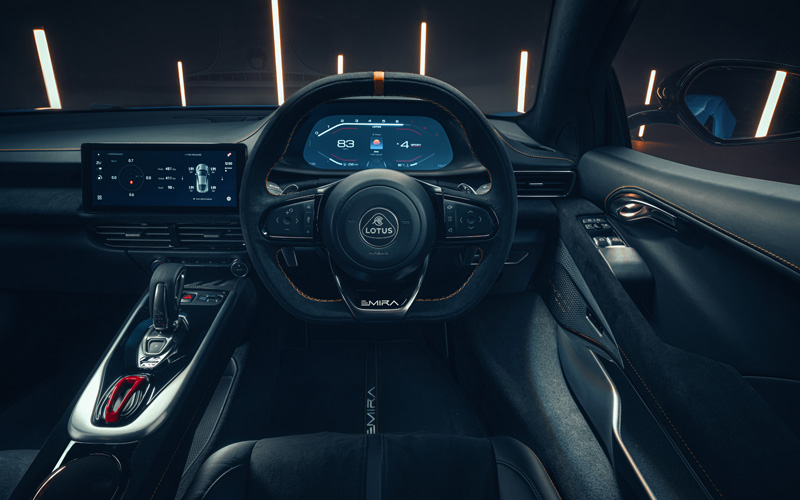
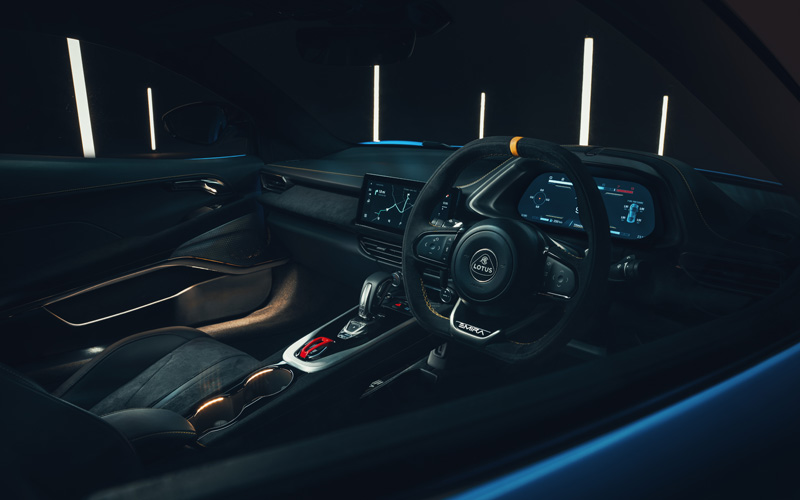
The wraparound nature of the dashboard as it blends into the door trim creates a cossetted feeling that makes the driver feel at one with the car. The raised gear shifter only enhances that emotion. There are a high number of soft-trimmed surfaces, showcasing premium British craftsmanship that conveys ultimate sportiness. They blend perfectly with modern technical finishes to create a premium experience for the driver – ‘technology with soul’ – and there are details added in tribute to the heritage and sporting success of Lotus. Examples include the positioning of the gearstick on manual cars, which echoes that of the iconic Esprit, and the semi-exposed gear linkage visible at the base of the centre console on V6 manual cars, as on the Elise and Exige. Adding to the sense of theatre is the protective red cover over the start/stop button.
The two seats have been designed to combine exceptional lateral support for high-speed cornering with total comfort for long distance journeys. There is four-way electric adjustment on the standard seat, with the option to upgrade to a premium sports seat with 12-way electric adjustment for both the driver and passenger. All seats are unique to the Emira. The dramatic supercar-like low stance of the car has been achieved while matching best-in-class ingress/egress and headroom.
Also unique to the Emira is the flat-bottomed sports steering wheel with metallic spoke detail and integrated controls. The interior features ambient and wraparound lighting as well as map lights.
Features available on the Emira include keyless go, cruise control, rain-sensing wipers, electric folding door mirrors, rear parking sensors (with front sensors as an option), auto-dimming rear view mirror, curtain airbags, launch control (as part of optional Lotus Drivers Pack), and a stolen vehicle tracker.
Advanced Driver Assistance Systems (ADAS) available on the Emira include adaptive cruise control, anti-collision system, fatigue alert, road sign information, vehicle speed limiter, lane departure warning, rear cross traffic alert, lane change assist.
An everyday sports car that sets new standards for practicality, comfort and functionality
Richard Moore, Executive Director, Engineering, Lotus, commented: “Lotus customers around the world have rightly come to expect outstanding dynamic performance from our sports cars, and they will undoubtedly get that with the Emira. Like every great Lotus it has that element of theatre, for example, the visible gearshift mechanism on manual cars and the exposed throttle actuator in the V6 engine bay.”
He added: “What will surprise and delight sports car customers the world over is the level of practicality, functionality and comfort which sets new standards for Lotus.”
From the very first discussions Lotus wanted the Emira to be an ‘every day’ sports car, delivering a usability and practicality to support that with levels of comfort and desirability for total comfort over long-distance cruising. To that end, it sets new standards for Lotus and is better than ever for the tallest and shortest drivers. There is more space between the occupants as well.
The glass area has been designed to provide good all-round visibility for daily use. Acknowledging that some owners will drive their Emira in a spirited way, and even on a circuit, the view forward – particularly of the haunches – supports highly accurate placement of the car through corners.
Access to the car’s infotainment system is via a 10.25-inch centrally mounted touch-screen, with an additional 12.3-inch TFT driver’s display behind the steering wheel. All content is exclusive to Lotus has been designed and developed by an in-house team. Android Auto and Apple CarPlay are integrated as standard.
Also exclusive to Lotus is the availability of a 10-channel premium sound system from highly respected British brand KEF. This is the company’s first ever automotive partnership and features its signature Uni-QTM technology, a unique configuration which dispenses with separated tweeter and mid-range, instead combining both into an acoustically idealised single unit. Finished with a distinctive bespoke speaker fret design, Uni-Q covers the entire mid and high-frequency sound spectrum from a single point in space, delivering a more coherent, hyper-realistic sound experience.
Storage is vital in sports car and the Emira’s cabin has been exceptionally well thought out. It has twin central cup holders with a phone storage slot between them, and door bins that can accommodate a 500ml bottle. Practicality also comes from the glovebox, trinket tray ahead of the gearstick, armrest between the seats with USB and 12v ports, plus a console net for bottles or documents.
Luggage or other large items can be stored behind the two seats (208 litres) or in the boot to the rear of the engine. This space (151 litres) will take a standard-sized flight case or a set of golf clubs.
Built at Hethel in an all-new manufacturing facility
Lotus sports cars have been built at Hethel since 1966. Following more than £100million of UK investment by Lotus, production of the Emira will take place in all-new state-of-the-art factory. The Emira will remain ‘Handmade in Hethel’, supported by new processes and technologies that will enhance efficiency and build quality – a genuine ‘best of both worlds’ solution.
An all-new paintshop features robotic application – a first for Lotus that will improve quality, capacity and process repeatability. It includes many innovative technologies such as a combined primer and clearcoat line. There is a new semi-automated body assembly system, with robots being used to apply adhesive. Vehicle bodies are transported around the main assembly area on Automated Guided Vehicles (AGVs). Emira production actually begins at Lotus Advanced Structures (LAS), an all-new facility in nearby Norwich where chassis fabrication and front-end assembly takes place. The launch of the Emira has created more than 200 new operations roles at Lotus.
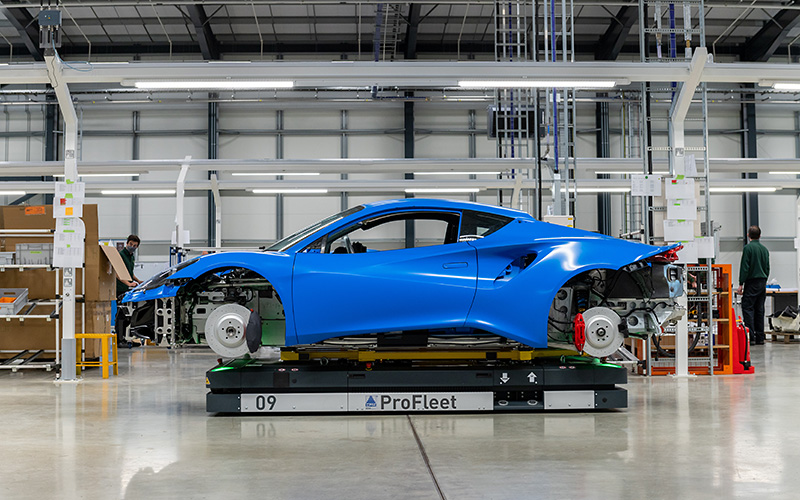
Digital visualiser online at www.lotuscars.com
Lotus retailers around the world are now taking deposits for the Emira, and the first customers will take delivery next spring.
A digital visualiser showcasing the car’s striking design is live at www.lotuscars.com featuring the six exterior paint colours available at launch – Hethel Yellow, Shadow Grey, Magma Red, Nimbus Grey, Dark Verdant and the launch finish of Seneca Blue. Seven interior colours are available – Black Nappa leather, Red Nappa leather, Grey Nappa leather, Tan Nappa leather, Black Alcantara with grey stitch, Black Alcantara with red stitch and Black Alcantara with yellow stitch. There are five wheel choices – cast 10-spoke, gloss black 10-spoke, silver forged V-spoke, gloss black forged V-spoke and diamond cut forged V-spoke) – with four brake caliper colours – black, red, yellow and silver.
Lotus Emira range technical specification
|
Price range |
Starting at less than £60,000 (less than €72,000) |
|
Dimensions |
Length 4,412mm; width 1,895mm (mirrors folded); height 1,225mm; wheelbase 2,575mm |
|
Petrol engines |
2.0-litre in-line four-cylinder / 3.5-litre V6 |
|
Transmissions |
Manual, automatic and DCT |
|
Power output |
360-400hp |
|
Maximum torque |
430Nm |
|
Acceleration (0-62mph / 0-100km/h) |
Less than 4.5 seconds |
|
Top speed |
Up to 180mph (290km/h) |
|
CO2 emissions |
Start below 180g/km |
|
Kerb weight (DIN) |
1,405kg in its lightest form |
|
Connectivity and infotainment |
10.25-inch touch-screen; integrated navigation*; Apple CarPlay / Android Auto; KEF Uni-Q premium audio system * not available in all markets |
|
Key technology and features |
Keyless-go; cruise control; rain-sensing wipers; electric folding door mirrors; powered seats; all-LES exterior lights; adaptive cruise control; anti-collision system; fatigue alert; road sign information; vehicle speed limiter; lane departure warning; rear cross traffic alert; lane change assist.
|
Emira: the most powerful four-cylinder Lotus sports car ever
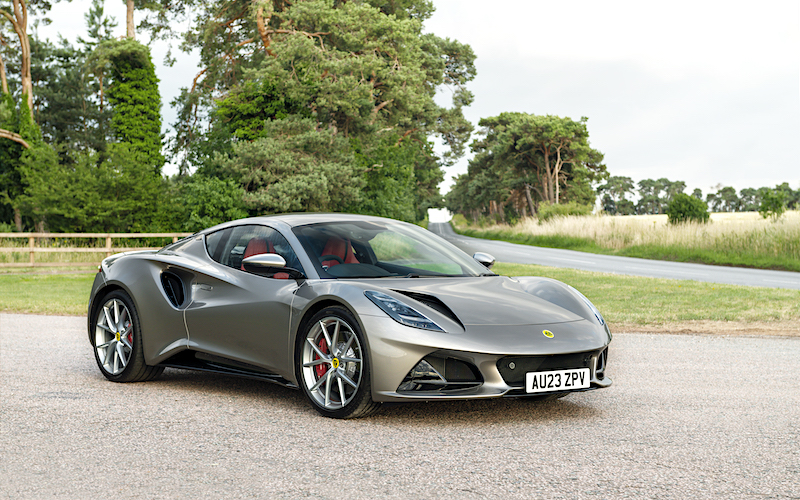

- Second powertrain in the Emira range extends appeal of award-winning Lotus
- State-of-the-art, 360bhp mid-mounted makes Emira most powerful four-cylinder Lotus sports car of all time
- Eight-speed dual-clutch transmission (DCT) provides rapid and seamless shifts
- Means drivers can opt for reward of full manual control or comfort of automatic gear changes
- Capable of 0-62mph (0-100km/h) in 4.4 seconds and a maximum speed of 171mph (275km/h)
- Includes twin-scroll turbocharger, combined direct and port fuel injection system and variable valvetrain to deliver optimum blend of power, responsiveness and efficiency
- Emira First Edition available to order now. Configure your Emira here
Captivating driving enthusiasts worldwide since its debut two years ago, the critically acclaimed and award-winning Lotus Emira V6 has secured its rightful place as the most accomplished Lotus sports car ever made. With striking design, astonishing performance and benchmark ride and handling, its supercharged 3.5-litre powerplant matched to a choice of six-speed manual and automatic transmissions delivers a driving experience that could only be from Lotus.
Now, the appeal of this mid-engined two-seater is further enhanced by the addition of a four-cylinder engine which features state-of-the-art technologies to deliver incredible performance and remarkable efficiency. Supplied by technical partner Mercedes-AMG, the all-aluminium, turbocharged 2.0-litre unit is based on the world’s most powerful four-cylinder in series production.
Badged for launch as the Emira First Edition, it has been further developed by Lotus with new intake and exhaust systems, plus a bespoke calibration matched to new transmission shift-mapping. Developing 360bhp and 430Nm, this makes it a perfect match to the Emira’s lightweight, strong, stiff, bonded and extruded aluminium chassis structure and aligns to the Lotus ethos of delivering higher performance by reducing mass.
It’s also fitting that, as the final mainstream combustion engine Lotus two-seater, the Emira is the most powerful four-cylinder from Lotus in a rich bloodline of iconic models including the Elise, Esprit, Europa, Elan and Elite. And, at 180bhp/litre, it also has the highest specific power output in the Emira range.
Like the renowned 400bhp supercharged V6, the four-cylinder car delivers all the performance and responsiveness that drivers expect – 0-62mph (0-100km/h) in just 4.4 seconds and a 171mph (275km/h) maximum speed – while bringing its own unique character to the Emira range. That character is enhanced by the inherent day-to-day usability and comfort of the smooth and rapid shifting dual-clutch transmission. It also offers the added advantages of lower fuel consumption and a target CO2 emissions figure of 208g/km (WLTP combined).
Mike Johnstone, Group Vice-President and Chief Commercial Officer, Lotus, said: “The Emira V6 has already proved incredibly successful, with many thousands of orders received from around the world. Now, with the four-cylinder Emira joining the range, we’re adding a new dimension to the car’s breadth of capability and appeal, offering new levels of efficiency and accessibility while continuing to offer all the performance and agility that our customers expect.”
Gavan Kershaw, Director, Vehicle Attributes and Product Integrity, Lotus, said: “We’ve meticulously tuned the suspension settings for the 2.0-litre Emira to deliver the superb body and control that’s a Lotus hallmark without the car ever feeling harsh. We’ve calibrated engine and transmission mapping, in tandem with the Drive Modes, to create a refined and relaxed character in Tour, and with incredible launch performance, superb driveability, even quicker throttle response and kickdown in Sport and Track. We’ve also taken the opportunity to refine how the powertrain is linked to the traction and stability control systems to deliver the high-performance feel and connection that Lotus drivers expect.”
Like the Emira V6, the new 2.0-litre car is built in the Chapman Production Centre (CPC) at Hethel, named in honour of the company’s legendary founder and inspiration. However, it starts life at Lotus Advanced Structures in nearby Norwich, where sub-assembly of the lightweight aluminium chassis structure takes place. Combined, these world-class centres of excellence for sports car manufacturing are part of a £100 million investment by Lotus in its UK facilities. Customers in the UK have the option of collecting their Emira from Hethel and, as part of the experience, tour the CPC assembly halls where their car was made.
Powertrain: powerful, responsive, efficient
Designed solely for high-performance applications, the 1,991cc engine features a cylinder block produced using the advanced chill-casting process: compared to conventional sand-casting methods used in high volume applications, this results in a uniform, fine-grained structure which delivers the high strength and durability needed to withstand the high loads generated. Following motorsport practise, the block is also of closed-deck design for maximum stiffness, and instead of conventional cast iron liners, the cylinder bores use a patented low-friction coating to save weight. For the optimal balance of high strength and low weight, both the steel crankshaft and aluminium pistons are forged.
The cylinder head features four valves per cylinder and a 200bar direct injection system. Intake and exhaust cams feature variable valve timing, while on the exhaust side, the valves can be varied between high and low duration. The piezo injectors deliver fuel into the combustion chamber with very high precision, both in terms of the amount of fuel and the spray pattern, resulting in enhanced combustion with reduced emissions. For maximum power, the piezo injectors are joined by the port fuel injectors, mounted directly on the intake side of the cylinder head to deliver the correct amount of petrol needed at full load.
The turbocharger is a ‘twin-scroll’ design, meaning the turbine housing is split into two separate ducts, matched to corresponding ducts in the exhaust manifold. This minimises exhaust gas pulsation interference, helping to improve the efficient exchange of gases in the cylinders. It also ensures that boost pressure builds up more rapidly, and to further enhance responsiveness, the shaft joining the compressor and turbine wheel runs in ultra-low-friction roller bearings. To manage boost pressure most effectively, the wastegate is electronically controlled.
This combination of advanced technologies, together with intake and exhaust systems developed by Lotus and optimised with a unique in-house calibration, ensure this remarkable engine can deliver an astonishing balance of power, torque and efficiency throughout its full operating range. Generating 430Nm from 3,000-5,500rpm and 360bhp at 6,600rpm before reaching a maximum speed of 7,200rpm, it ensures an authentic Lotus sports car driving experience while also being refined in day-to-day use.
Sending drive to the rear wheels is Mercedes-AMG’s acclaimed eight-speed dual-clutch transmission (DCT) – a first use of the technology by Lotus and fitted exclusively to the Emira. Compared to the six-speed manual and automatic transmissions offered on the Emira V6, the DCT offers even quicker gearchanges with no torque interruption during shifting, enhancing efficiency and shift comfort. Drivers also have the choice of smooth, effortless changes if they leave the car in Drive, or ultra-fast dynamic changes if they control the transmission themselves using the shift lever in the centre console or steering wheel paddles.
Launch control enables the driver to set the car up for optimum acceleration from a standing start by maximising the available traction from the rear wheels and torque from the powertrain. This feature enables consistent, optimal get-aways – time and time again – allowing the driver to fully exploit the Emira’s exhilarating performance.
Vehicle dynamics: agile, intuitive, rewarding
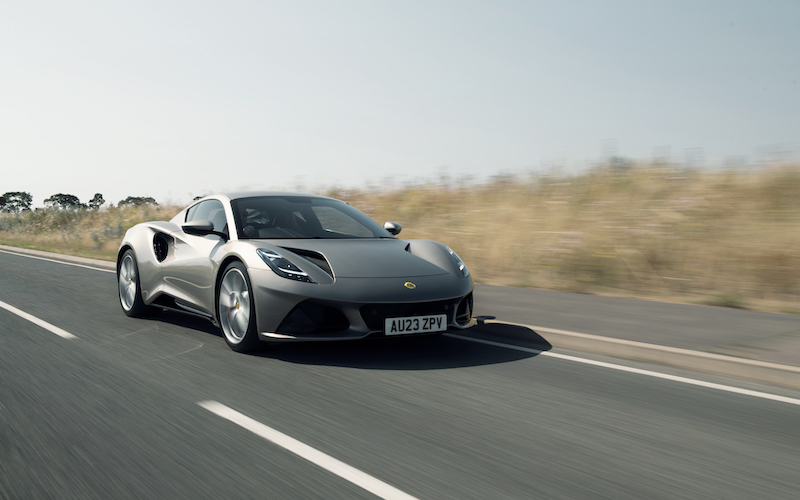
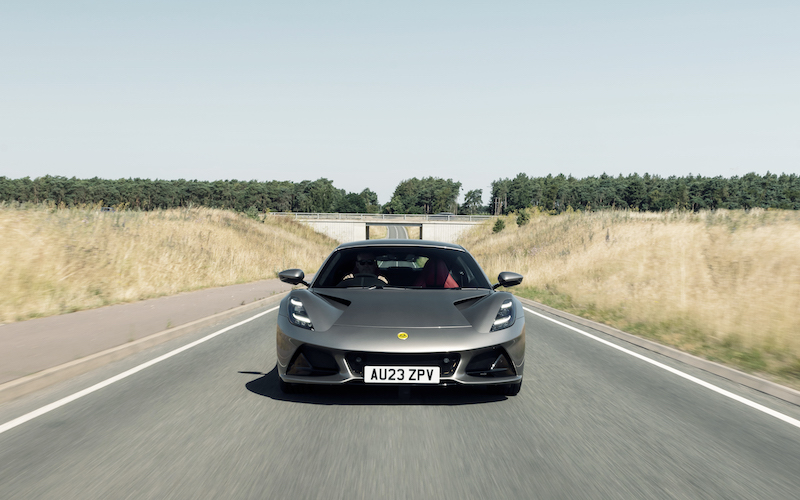
The Emira’s light, stiff, bonded aluminium Lotus Sports Car Architecture gave the vehicle dynamics engineers the perfect platform from which to develop the car’s ride, handling and steering characteristics, all of which set the class benchmark, as every Lotus sports car should. With a torsional stiffness of 26,300Nm/ degree, the chassis contributes to the immediate, precise responses of every system. The Emira features race-derived, lightweight, forged aluminium double-wishbone suspension all round, which delivers the greatest control of the tyre contact patch throughout the suspension’s full range of travel, contributing to the Emira’s exceptional agility and responsiveness.
The introduction of the four-cylinder engine to the Emira range created the opportunity for Lotus to introduce a new, lightweight cast aluminium rear subframe to optimise the packaging of the powerplant within the chassis structure. It’s in place of the steel assembly used on the Emira V6 and contributes to a total weight saving of 12kg. The subframe also houses the new rear suspension.
The electro-hydraulic steering system delivers the pure, truly connected feel fundamental to Lotus sports car DNA, together with speed-dependent efforts, but without the losses created by an engine-driven pump. The immediacy of response to every input the driver makes is amplified by the seating position being almost in the centre of the 2,575mm wheelbase, thanks to the Emira’s mid-engine configuration.
The Eibach springs and Bilstein high-pressure monotube dampers are meticulously tuned to suit the Emira, and offered with different settings depending on whether the customer chooses the Tour or Sport chassis settings. Tour is optimised for road use, offering softer springs and dampers, while Sport is track-focused with stiffer springs and dampers, together with increased camber and toe angles to maximise grip. The anti-roll bar stiffnesses are also bespoke to Emira, and the component on the front axle is now lighter too.
A choice of specially-developed tyres is available on the four-cylinder Emira, which are asymmetrically sized to suit the exacting requirements of steering and traction – 245/35/R20 on the front axle and 295/30/R20 at the rear. Fitted as standard as part of the Tour chassis (and also available as an option with the Sports chassis), the Goodyear Eagle F1 Supersport tyres deliver high performance with enhanced all-weather capability without any compromise to feedback. Offered exclusively as part of the Sports chassis, the Michelin Pilot Sport Cup 2 tyres are designed for extreme track use without compromising ride comfort. Both tyres have ‘LTS’ markings on the side wall to denote the Lotus-approved specification
The braking system provides stopping power commensurate with the new engine’s output, and features lightweight, two-piece, cross-drilled and slotted discs together with four-piston calipers on the front axle. The calipers can be finished in a choice of four colours at no extra cost.
Complementing the changes to the chassis hardware is a completely new calibration for the Electronic Stability Control system. There’s also an e-Diff function which can apply carefully modulated brake pressure to the rear wheels in order to maximise traction by the transfer of torque to the one with the most grip, which is particularly beneficial when accelerating out of slow corners. It also enhances dynamic performance and control in challenging conditions, such as roads covered in snow, rain or mud.
Exterior design: aerodynamically beautiful
The Emira’s design language is a development of the sculpted surfaces and technical detailing which debuted on the all-electric Evija hypercar, and brings unrivalled supercar desirability to the sports car segment. Strikingly beautiful, timeless and unmistakably Lotus, its perfect proportions and athletic, taught, shrink-wrapped form are the very embodiment of Lotus sports car DNA.
The front is dominated by the full-LED headlights – each with a double ‘blade’ daytime running light signature – and purposeful, angular bonnet ducts. The latter guide airflow over the car, reducing drag, and reinforce the Emira’s performance potential while making a direct visual link to the Evija.
Sculpted doors feature deployable handles, also cutting drag, while the dramatic form pressed into the outer skin blends seamlessly into the intake ducts integrated into the muscular rear haunches. These feed air, via the water-cooled charge cooler, to the engine’s intake system, and also help to cool the engine itself.
The rear of the car features two distinctive gloss black vents, allowing air to flow out from the wheel arches. Beneath, also finished in gloss black, is the rear diffuser, into which the two exhaust pipes and rear number plate are neatly integrated.
As a result of meticulous development using cutting-edge computational fluid dynamics simulations, and further refinement in the wind tunnel, the Emira doesn’t need any active aerodynamic features, and creates passive downforce that’s perfectly balanced between the front and rear axles at all speeds. The result is enhanced grip and handling characteristics which remain constant, precise and predictable.
The Emira can be specified in a range of 13 colours, each one created to heighten the visual impact of the Emira’s dramatic, purposeful form: Hethel Yellow, Magma Red, Vivid Red, Dark Verdant, Seneca Blue, Atlantis Blue, Meridian Blue, Osmium Silver, Nimbus Grey, Shadow Grey, Zinc Grey, Mist White and Cosmos Black.
The optional Black Pack sees a contemporary gloss black finish applied to the roof, cantrails, mirror pods and the Lotus wordmark on the rear clamshell. The exhaust finishers are satin black. The 20-inch, ultra-lightweight forged wheels feature a diamond-cut finish as standard, with silver or gloss black available as options, completing the distinctive look.
Emira inside: driver-focused and pure
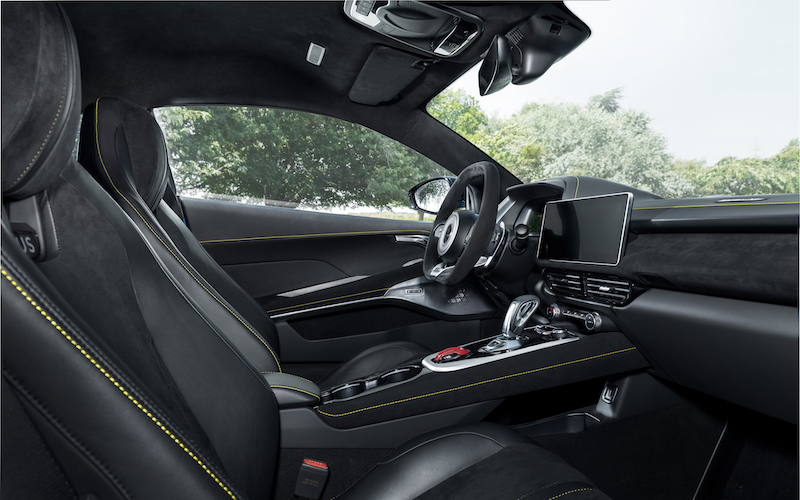
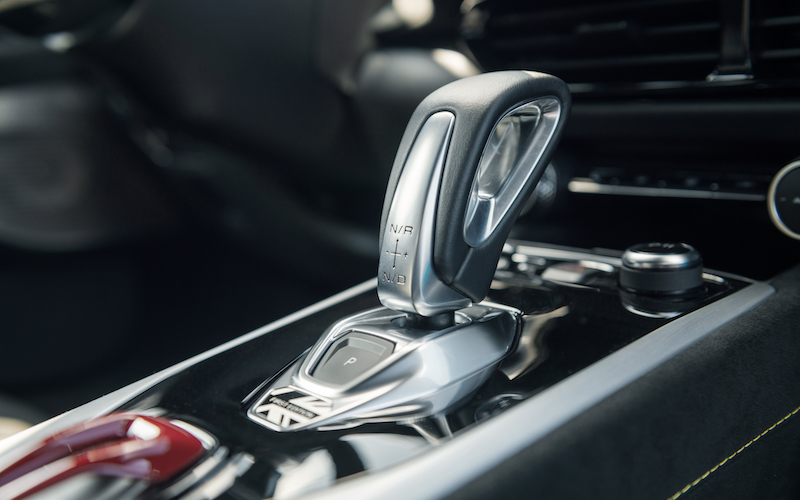
Luxurious, spacious and unmistakably driver-focused, the Emira’s interior is beautifully crafted and effortlessly combines rich materials and the latest technologies to deliver levels of comfort, usability and practicality which set new standards for Lotus sports cars.
Ahead of the flat-bottomed steering wheel is a 12.3-inch TFT instrument cluster, while in the centre of the cockpit is a 10.25-inch touchscreen for the infotainment system, which features integrated navigation* All of the content was designed in-house, making it simple and intuitive to use, while enhancing the driving experience. Android Auto and Apple CarPlay connectivity is standard*.
The 10-channel, 560W premium audio system was developed for the Emira in partnership with KEF and features the renowned British brand’s signature Uni-QTM technology, which combines tweeter and mid-range into a single, acoustically-optimised unit. Beautifully finished with a distinctive bespoke speaker fret design, Uni-Q covers the entire mid and high-frequency sound spectrum from a single point in space, delivering a more coherent, hyper-realistic sound experience.
The 12-way power-adjust heated seats offer both incredible support for spirited driving as well as superb comfort on long drives, and are offered in Nappa leather in either black, red, ice grey or tan, or in black Alcantara with a choice of contrast stitching in either yellow, red or ice grey. These same materials are also offered on the steering wheel, as an option, with the top dead centre band and stitching available in yellow, red or ice grey. Black Alcantara is also used for the headliner, further enriching the cabin. Behind the two seats is 208-litres of storage, with the rear luggage compartment offering a further 151 litres.
*Market-specific features
Prices and Specifications
Lotus Emira First Edition UK and European Pricing (from)*
|
Market |
Currency |
Pricing from |
|
UK |
GBP |
81,495 |
|
Germany |
EUR |
95,995 |
|
France |
EUR |
96,815 |
|
Italy |
EUR |
98,435 |
|
Belgium |
EUR |
97,625 |
|
Austria |
EUR |
115,802 |
|
Netherlands |
EUR |
127,030 |
|
Luxembourg |
EUR |
93,368 |
|
Switzerland |
CHF |
103,420 |
|
Sweden |
SEK |
1,145,450 |
|
Denmark |
DKK |
1,771,825 |
Lotus Emira: Technical Specification
Powertrain and performance:
|
|
|
|
Engine configuration |
1,991cc turbocharged four-cylinder in-line petrol; four valves per cylinder; variable valve timing; single twin-scroll turbocharger; 200bar piezo direct fuel injection + port fuel injection |
|
Transmission |
Eight-speed dual-clutch |
|
Max power ( bhp/ kW) |
360/ 269 |
|
Max torque (Nm) |
430 |
|
Top speed (mph / km/h) |
171/ 275 |
|
0-62 mph / 0-100 km/h (secs) |
4.4 |
|
0-60 mph (secs) |
4.3 |
|
Fuel consumption (WLTP Combined) (mpg/ L/100km)* |
TBC* |
|
CO2 emissions (WLTP Combined) (g/km)* |
208* |
* Subject to homologation
Chassis
|
Front suspension |
Double wishbone |
|
Rear suspension |
Double wishbone |
|
Springs |
Coil |
|
Dampers |
High pressure monotube |
|
Steering |
Electrohydraulic; rack and pinion |
|
Front brake disc diameter (mm) |
370 x 32 |
|
Rear brake disc diameter (mm) |
350mm x 32mm |
|
Calipers |
AP Racing 4-piston with braided hoses |
|
Front tyres |
245/35/R20 |
|
Rear tyres |
295/30/R20 |
Dimensions
|
Length (mm) |
4,413 |
|
Width including door mirrors (mm) |
2,092 |
|
Width with mirrors folded (mm) |
1,895 |
|
Track front / rear (mm) |
1,626/ 1,608 |
|
Height (mm) |
1,226 |
|
Wheelbase (mm) |
2,575 |
|
Drag Coefficient |
0.349 |
|
Weight (DIN) (kg) |
1,446 |
|
Rear luggage compartment capacity (litres) |
151 |
|
Cabin luggage capacity (litres) |
208 |
|
Fuel tank capacity (litres) |
52.5 |
Lotus Emira: delivering exotic supercar appeal in the sports car segment
- Q&As with lead exterior designer Daniel Durrant and lead interior design Jon Statham
- Each discusses their inspiration and the challenges in creating this thrilling new Lotus sports car
(Hethel, UK – 6 July 2021) – Receiving its world premiere at Hethel, Norfolk, on the evening of Tuesday 6 July, the design of the Lotus Emira is beautiful, timeless, memorable and modern. Above all, it looks like a Lotus, with optimised proportions and an athletic shrink-wrapped body which visually describes Lotus’ legendary agile driving characteristics.

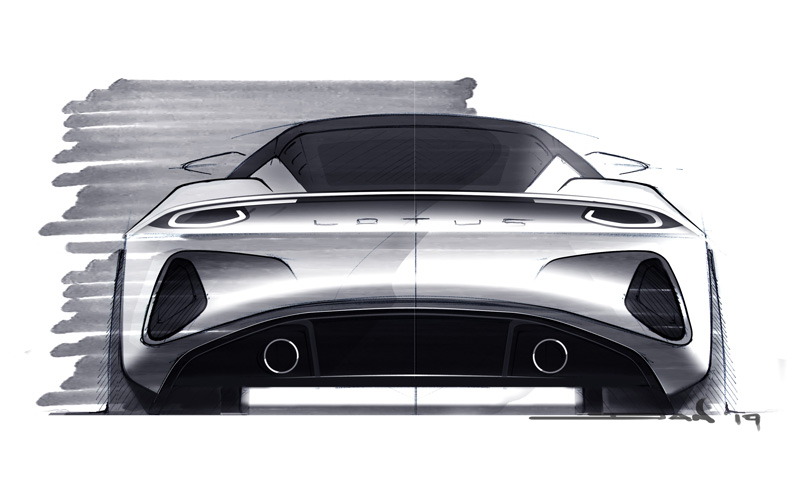
Led by Russell Carr, Design Director, Lotus, the lead exterior and interior designers of the Emira are Daniel Durrant and Jon Statham. Combined, they have close to 40 years of experience in the Hethel design studio and have worked on countless other projects. Those have been both for Lotus and for clients as part of the consultancy services offered by Lotus Engineering.
The Emira is the first Lotus sports car to carry the new design language showcased on the award-winning Evija hypercar. It’s a contemporary look with sculpted surfaces and technical detailing, delivering exotic supercar appeal in the sports car segment. A new and more premium approach for Lotus in terms of forms and materials, it is also a leap forward in interior refinement and technology.
Below, Daniel and Jon explain their work on the all-new Lotus Emira.
Q&A with Daniel Durrant
Age: 40
At Lotus: Senior Designer, worked at Lotus for 12 years
On Emira: Overseeing design and development of the exterior
Lotus CV highlights:
- (2014) – Lotus Exige LF1 Special Edition
- (2015) – Lotus Evora 400 exterior programme
- (2017) – Lotus Exige 430 Cup
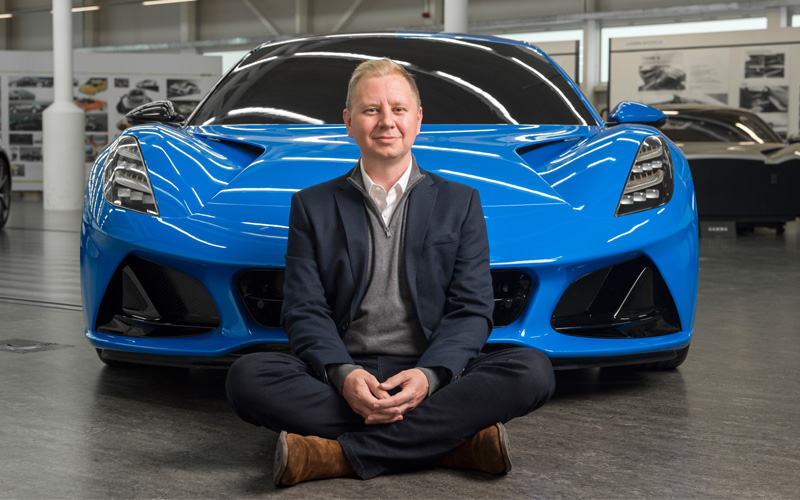
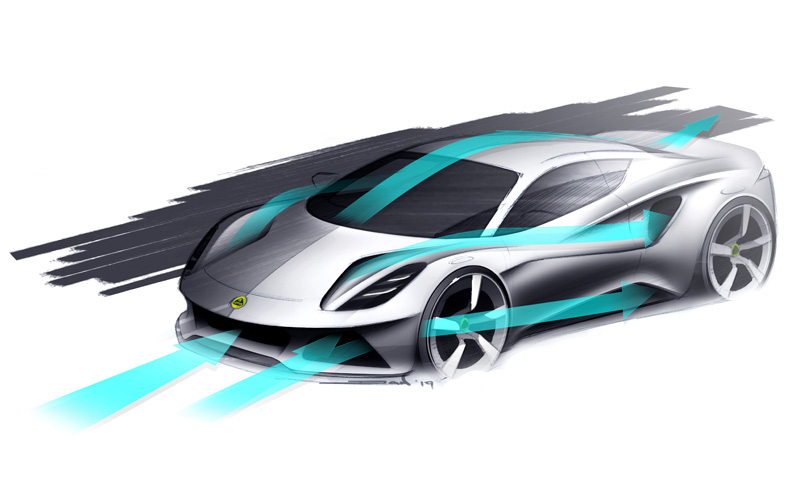
How did it feel when you were selected for the role on the Emira?
I was thrilled to have my theme selected for the Emira. I have worked on many Lotus programmes in the studio, so to take the lead exterior design role was an amazing opportunity and a huge responsibility. I am a Lotus fan and our products are very special.
When did you start work on the Emira?
My first sketches were done back in 2018.
Where did your inspiration come from?
It came from all over. The Evija was a strong reference point, and Lotus has a rich technical and visual library to draw from. I like the shapes seen in military fighter jets. There’s often a softness to their overall surface forms but with taught creases. Shapes found in nature can also be a great inspiration – an attacking shark nose or the muscular haunches seen on a pouncing cheetah, for example.
Can you describe the exterior of the car in five words?
Sculptural, athletic, agile, elegant, alive.
What’s your favourite part of the car?
I think that the sculpture around the body side air intake is my favourite. The surfaces are incredibly three dimensional and designed to channel the airflow into the bodyside duct. There aren’t many cars in the world with this amount of form and drama in them, technical and beautiful. We always intended the Emira’s design language to be that of a baby supercar.
What has been the biggest challenge on the Emira?
It’s been finding the right balance of sportiness and sophistication from a visual perspective. It needed to look light, focused and agile without ever looking too aggressive or intimidating. It also needed to look premium without being too conservative. From a technical perspective, the sensor positions and ADAS radar module were the trickiest parts to incorporate. The front end is extremely low to the ground – just as a Lotus should be – but this creates challenges when it comes to positioning them. These components are very small but devilishly awkward.
Can you describe what the design process has been like?
As a team we followed the regular Lotus design process, going from theme sketches, scale models and eventually to a full-size clay model. We tried many design ideas through the process before the final theme was chosen, and the technical and aerodynamic package evolved along the way as we honed the design. We always wanted close visual and philosophical harmony with the Evija. It was important that both products looked related to each other, but also performed technically in their own way given they’re very different cars. Overall it’s been rewarding and, as with anything that’s worth doing, challenging at times. Getting to this point, where the car is going into production, is very satisfying.
Why do you think the Emira is important for Lotus?
It shows that we can appeal to a broader range of customers while retaining the spirit of what makes it a true sports car.
What’s next for you in Lotus design?
It’s on to the next project which, of course, I can’t tell you anything about. It’s going to be exciting though.
Q&A with Jon Statham
Age: 54
At Lotus: Interior Design Manager, worked at Lotus for 24 years
On Emira: Overseeing design and development of the interior
Lotus CV highlights:
- 2000 – Lotus Exige Mk I
- 2002 – Lotus Esprit facelift (lead exterior designer)
- 2006 – Lotus 2-Eleven (lead exterior and interior designer)
- 2016 – Lotus Exige 430 and Evora 430

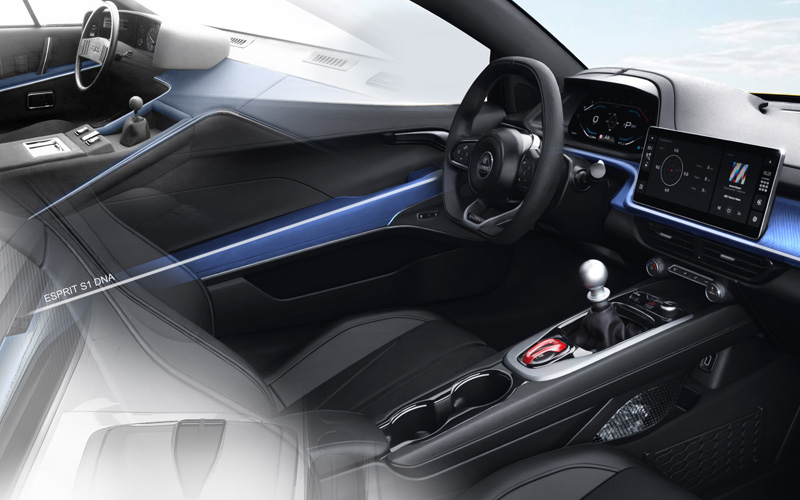
How did it feel when you were selected for the role on the Emira?
I consider it a privilege to work on such an important car for Lotus. To be involved in the full development programme, from initial sketches to production, has been challenging and rewarding in equal measure.
Why do you think the Emira is such an important car for Lotus?
I see the Emira as a big step forward on many levels. We’ve had a massive push on quality, technology, functionality, useability, desirability – it’s all there. It has a contemporary interior with good proportions. It isn’t too hardcore and will have broad appeal whilst still being ‘For The Drivers’.
Where did your inspiration come from?
The Lotus Evija has obviously been a massive inspiration for the whole team, but there are also elements of the S1 Esprit in there.
Can you describe what the design process has been like?
I feel really proud of my small team and how effective we have been. Jennifer Andriamamonjy’s interior theme was the one chosen and manages to blend sportiness with modernity and quality. Harvey Rabenjamina has worked really hard on steering wheel and seat design. A shout-out to our digital modellers and studio engineer Josh Router also deserves a mention. Together we have worked quickly and efficiently, all pulling in the same direction.
What has been the biggest challenge on this project?
We started work on the car in November 2018 and from the outset we knew that interior packaging would be the tricky element. We wanted the Emira to have outstanding ergonomics to make it as engaging as possible, and to do that while finding space for all the components was the challenge.
What is your favourite part of the car?
Above all else, I’m very proud of the cohesive nature of the interior design. It just exudes quality. I also think the instrumentation graphics are spot-on and perfectly suit the character of the car. Lotus has created its first ever digital design team to develop the HMI and we’ve worked closely with them. I’m really happy with the results.
What is next for you?
I have learned a lot from this programme working in what is effectively a new team. It will be good to take this experience into the next programme.





































































































































































